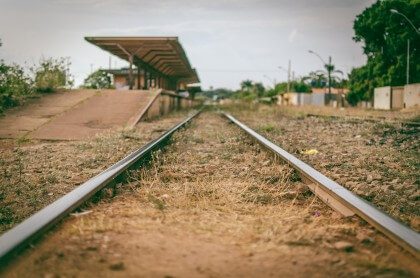Functions of Rails
The rolled steel sections laid end to end in two parallel lines over sleepers to form a railway track as known as rails. Rails in the railway track serve the following functions:

1) Rails provide a hard, smooth surface for passage of heavy moving loads with minimum tractive resistance.
2) Rails bear the stresses developed due to heavy vertical loads, lateral and braking forces and variation in temperature.
3) Rails provide a continuous level surface and as possible as a straight path for the movement of trains, which helps the traffic to travel comfortably.
4) Rails transmit the loads to sleepers and consequently reduce pressure on ballast and formation.
5) They assist as a lateral guide for the wheels of a train.
6) The rail material(high carbon steel) used is such that it can easily withstand wear and tear.
Read Also: